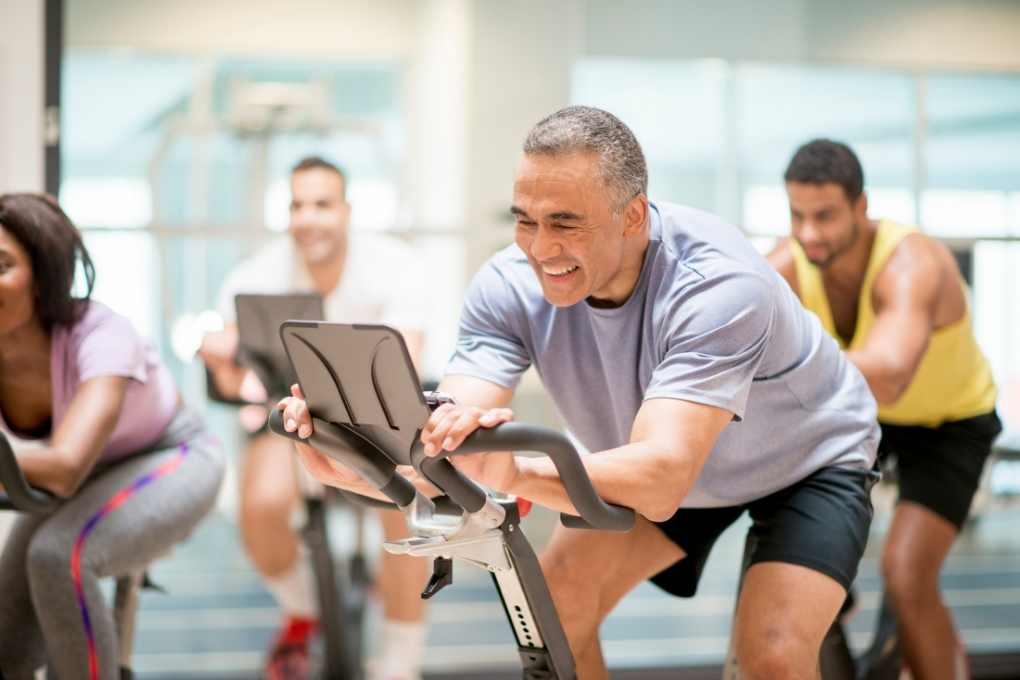
Indoor cycling has quickly become one of the most sought-after forms of exercise in recent years, offering a high-intensity cardio workout with reduced joint strain. Unfortunately, novice riders frequently make common errors that impede progress or increase injury risks; we will discuss some of these mistakes here and how you can avoid them in this blog post.
Selecting the Incorrect Bicycle Setup
One of the biggest mistakes beginners make with indoor cycling is not setting up their bikes correctly. Adjusting seat height, handlebar position, and pedal straps properly to ensure an efficient yet comfortable ride—otherwise discomfort or injury could arise during workout sessions.

Before beginning a cycling session, be sure to ensure your seat is at hip height when standing beside the bike and that the handlebars are level or slightly higher for optimal riding comfort. Also, make sure your pedal straps are secure but not so tight that they restrict movement.
Doing a regular inspection of your bike setup to prevent discomfort or pain when cycling can help ensure a more pleasant cycling experience. If you need help setting up or adjusting your bike, don’t be intimidated into reaching out for assistance from fitness instructors or experts in cycling.
Do You Ignore the Correct Cycling Form?
Beginner cyclists frequently make the mistake of overlooking proper cycling form, which could impede muscle activation or increase injury risks. Pay close attention to posture, pedal stroke, and hand placement when cycling for maximum effectiveness of the workout.
Keep your back straight, shoulders relaxed, and core engaged throughout your ride. Your pedal stroke should be smooth and controlled, pushing and pulling equally with each pedal stroke. Do not grip the handlebars too tightly, but instead opt for a light grip to avoid strain on the wrists and arms.
Practice proper form during every cycling session to enhance your technique and maximize its benefits. Consider enrolling in an indoor cycling beginner class to learn the fundamentals from an experienced instructor.
Avoid Adjusting Resistance Levels
Indoor cycling provides many distinct advantages, one being its ability to adjust resistance levels according to your fitness level and goals. But beginners often make the mistake of cycling at too high or too low a resistance that limits their progress, potentially leading to burnout or injury.

Start at a moderate resistance level that challenges but allows you to maintain proper form and cadence, then gradually increase it as you build strength and endurance. Pay attention to how your body responds and make necessary adjustments accordingly for an enjoyable yet challenging workout experience.
Find your optimal resistance levels while cycling to find a balance that suits both your fitness level and goals. Push yourself when necessary, but know when it may be wiser to lower the resistance to prevent overexertion.
Overtraining
One common mistake beginner indoor cyclists make is overtraining. Although pushing yourself is essential to improvement and pushing past limits, too much too soon can cause burnout, fatigue, and an increased risk of injury if done in excess. Therefore, your body must have time to rest between intense cycling sessions for proper recovery and restorative purposes.
Listen to your body and be mindful of signs of fatigue or overtraining, such as persistent soreness, reduced performance, or difficulty sleeping. Schedule rest days into your training schedule so your muscles have time to recover and repair themselves; cross-training with other forms of exercise can also help avoid overuse injuries while increasing fitness overall.
Remember to schedule sufficient rest time into your fitness regime to reach your fitness goals and prevent burnout. Finding an equilibrium between challenging workouts and adequate recovery periods will maximize the benefits of indoor cycling while preventing burnout.
Proper hydration is key for optimal indoor cycling performance and recovery. Many beginner cyclists make the mistake of not drinking enough water before, during, and after their cycling sessions, resulting in dehydration and decreased performance. Staying hydrated is key in order to maintain energy levels and avoid cramps or fatigue during indoor cycling sessions.
Before embarking on your cycling session, take a sip of water to hydrate and prepare yourself. While riding, sip regularly throughout your ride in order to stay hydrated and replace fluids lost through sweat. Post-workout, continue drinking water in order to rehydrate and facilitate muscle recovery.
Be mindful of your body’s water intake needs and adapt your consumption accordingly. If you are sweating profusely or cycling for extended periods, replenish lost nutrients by drinking electrolyte-rich sports drinks containing electrolytes to avoid dehydration.
Avoid Warm-Up and Cool-Down Activities
Beginning indoor cyclists often make the mistake of forgoing warm-up and cool-down sessions when beginning cycling indoors. A good warm-up prepares your body by increasing blood flow to muscles while slowly raising heart rate; then cooling off helps lower heart rate while simultaneously decreasing intensity gradually to reduce muscle soreness.

Before each cycling session, take several minutes to warm up by engaging in light cycling or dynamic stretches to loosen muscles and joints, gradually increasing intensity as you build momentum toward an intense ride. Following your ride, set aside time for relaxation through a slower pedaling pace or static stretches to prevent stiffness in muscles and prevent stiffness from returning after your ride is finished.
Warm-up and cool-down exercises can significantly enhance your performance, reduce risks of injury, and accelerate recovery time. Treat these segments of your workout as integral parts of reaping all the advantages of indoor cycling.
Rejecting Your Body as Evidence of an Improper Health Habit
One of the key aspects of indoor cycling is paying attention to and responding to your body. Beginning riders often make the mistake of pushing through discomfort during workouts, leading to injury or burnout. Therefore, it’s crucial that you pay attention to how your body feels and adjust your intensity or technique accordingly.
If you experience sharp pain, dizziness, or persistent discomfort while cycling, stop immediately and seek medical assistance as soon as possible. Don’t ignore warning signals from your body; these could indicate potential issues that require attention. Be aware of your limits; know when it is appropriate to push harder while also knowing when it is wiser to rest or take a break.
Develop a stronger mind-body connection by tuning into and responding to your body’s signals and cues and taking appropriate actions accordingly. Doing this can help prevent injuries while providing you with an enjoyable indoor cycling experience.
Indoor cycling is an effective way to build cardiovascular fitness, increase strength, and burn calories. Newcomers should be wary of common mistakes that could impede progress and increase injury risks; by being mindful and following proper techniques, you can ensure an enjoyable indoor cycling workout experience.
Be sure to set up your bike correctly, maintain proper form, adjust resistance levels, avoid overtraining, hydrate appropriately, warm up and cool down properly, and listen to your body during each cycling session for optimal results and long-term benefits of indoor cycling. With consistency and attention to detail, you can realize your fitness goals and reap their rewards for years.

